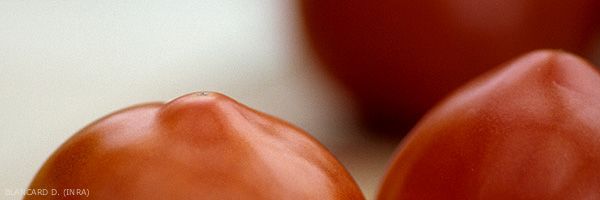
Mucronate fruits
( lemon-shaped fruits )
( lemon-shaped fruits )
Symptoms on fruits
Fruits revealing an elongation at the stylar attachment giving their tip an appearance close to that of lemon (figures 1 and 2). This sharp growth is called “mucro”.
Origin of damage
Non-parasitic disease
The absence of fall of the petals and the stamens at the beginning of the ovary's enlargement would be at the origin of this stylar extension.
This persistence of the floral parts at the end of the fruits would be influenced by climatic conditions limiting their drying out or the development of the ovary (excessive humidity, low temperatures).
Note that the use of hormones can also contribute to the appearance of mucrons, and that not all cultivars show the same sensitivity.
How to cure it
Ensure maximum comfort to the plants during the flowering period of the first bouquets of early crops.
The climate
The climate
- Avoid keeping night temperature setpoints too low.
- Ensure optimal humidity in the shelters, especially not excessive.
The plant and its behavior
- Grow varieties that are not very sensitive.
- Avoid that the plants are too vegetative.
- Mastering the use of hormones.
Note that under conditions favorable to the expression of mucrons, you will be able to observe pointed, heart-shaped fruits, called by the Anglo-Saxons “ pointed fruit malformation ”. Temperatures that are too low at night, and perhaps during the day, would disrupt the development of the locular cavities of the ovaries: the placenta would not develop and there would be a limited number of eggs, which would explain the deformation of certain locular cavities. and the appearance of the fruit, heart-shaped. This condition would also appear in hot production areas, during periods of very low humidity.





